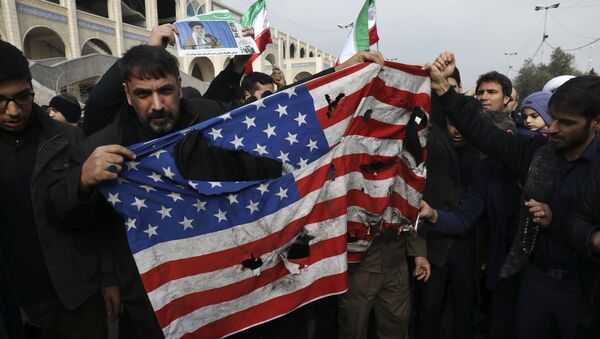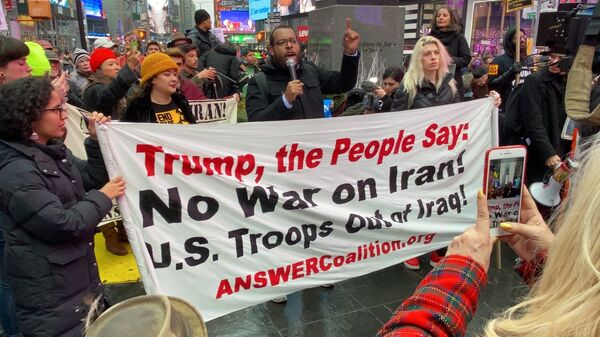As talk of World War III has been all over the internet in the past 24 hours in the aftermath of the US drone strike that killed top Revolutionary Guards general Qassem Suleimani in Baghdad, Selective Service System, a US government agency which pre-registers young men for the military draft, saw its website crash.
SSS went on Twitter to clarify the situation:
“Due to the spread of misinformation, our website is experiencing high traffic volumes at this time … We appreciate your patience,” the Selective Service System (SSS) tweeted on Friday.
Due to the spread of misinformation, our website is experiencing high traffic volumes at this time. If you are attempting to register or verify registration, please check back later today as we are working to resolve this issue. We appreciate your patience.
— Selective Service (@SSS_gov) January 3, 2020
It added that it was “conducting business as usual” and emphasised that a return to the draft is not imminent:
“In the event that a national emergency necessitates a draft, Congress and the president would need to pass official legislation,” The Guardian cited the agency as saying.
On Saturday, after the Twitter panic had subsided, the SSS website was up and running, if slowly.
On Friday, 3 December, Qasem Soleimani, the head of the Iranian Islamic Revolutionary Guard Corps’ (IRGC) elite Quds Force, and Abu Mahdi al-Muhandis, deputy commander of an Iraqi Shia militia group, were among those killed by a US drone attack near Baghdad International Airport.
US President Donald Trump called the attack a preemptive, defensive strike, while Iranian President Hassan Rouhani has warned that Tehran will take revenge for what it views to be a heinous crime.
On Saturday, Times Square in New York witnessed an anti-war rally, as several hundred people turned out with some participants holding Iranian flags and the late Soleimani's pictures.
‘Never Wildly Popular’
The Selective Service System website had been overwhelmed by young people flocking there to find out how to avoid military enlistment as the current developments had the phrase “World War III” trending on social media.
The SSS is an independent agency of the United States government that maintains information on those potentially subject to military conscription. While it currently has minimal practical effect, since the US military operates on a volunteer basis, it is seen as a contingency mechanism for the possibility that conscription may someday become necessary again.
The US military is composed solely of volunteers and there has been no announcement that compulsory service would be re-instated.
Virtually all male US citizens, regardless of where they live, and male immigrants, whether documented or undocumented, residing in the United States, who are 18 through 25, are required to register with Selective Service. The law says men must register with Selective Service within 30 days of their 18th birthday.

If you are required to register and you don't, you will not be eligible for federal student aid, federal job training, or a federal job. You may be prosecuted and face a fine of up to $250,000 and/or jail time of up to five years.
While maintaining that a return to the draft is unlikely, the SSS says it is prepared to “rapidly provide personnel in a fair and equitable manner while managing an alternative service programme for conscientious objectors”.
The United States first conscripted soldiers during the Civil War, prompting riots, as mobs of mostly foreign-born white workers took to the streets in New York City to protest conscription, burning down buildings and inciting violent attacks against black residents in the summer of 1863. The official death toll was 119.
The US continued to use the draft in some form on and off through the Vietnam War, said Jennifer Mittelstadt, a professor of history at Rutgers University.
There has been no conscription since 1973, when the draft was abolished after opposition to the conflict in Vietnam.
“There was huge support for ending the draft across the political spectrum,” Dr. Mittelstadt is quoted by the Guardian as saying, adding:
“I think it’s fair to say that the draft has never been wildly popular.”
The modern-day military is now an all-volunteer force, with about 1.2 million active-duty troops.
To change that, Congress would have to pass a law reinstating the draft, and the president would have to sign it, actions that would likely require broad political support.
However, there have been arguments in favour of a modern-day draft, including the potential to make the military more representative of society.
The current all-volunteer force is believed to be more likely to recruit people from the working class, says Mittelstadt, with higher percentages of nonwhite Americans serving.



